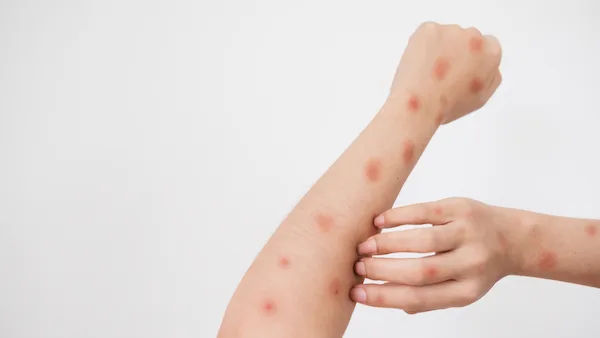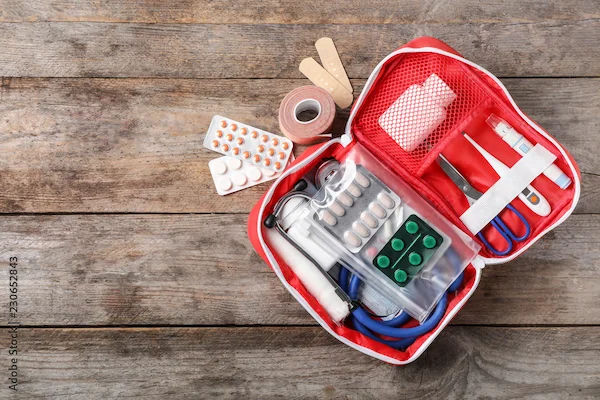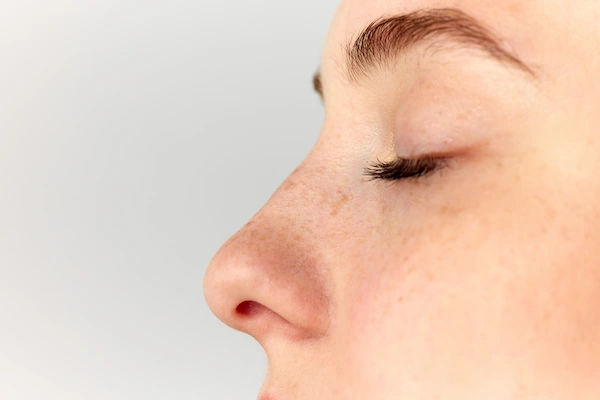Guide to Beware Accidental Poisoning
Learn essential safety tips to prevent accidental poisoning at home. Stay informed about common hazards, symptoms, and emergency responses to protect yourself and your loved ones.

Written by Dr. Dhankecha Mayank Dineshbhai
Reviewed by Dr. Vasanthasree Nair MBBS
Last updated on 13th Oct, 2025

Introduction
Accidental poisoning is a silent emergency that can strike in the blink of an eye, often in the place we feel safest: our own homes. Every year, millions of people, predominantly young children and older adults, experience poisoning incidents from everyday substances. From a toddler mistaking a colorful laundry pod for candy to a senior accidentally taking a double dose of medication, the risks are real and often overlooked. This comprehensive guide is designed to empower you with the knowledge to beware accidental poisoning. We will walk you through the common culprits hiding in plain sight, the critical symptoms to recognize, and the life-saving first steps to take in an emergency. More importantly, we will provide a detailed, proactive plan to poison-proof your home, turning awareness into action. Your vigilance is the first and most powerful line of defense.
What Exactly is Accidental Poisoning?
Accidental poisoning occurs when a person is exposed to a toxic or harmful substance without the intention of causing harm. This exposure can happen through ingestion (swallowing), inhalation, skin contact, or injection. The key differentiator is the lack of intent; it's a tragic mistake, not a deliberate act. Understanding this distinction is crucial, as the approach to prevention and the emotional context for families are entirely different. The substances involved are typically everyday items that become dangerous when used improperly, stored unsafely, or encountered by someone particularly vulnerable.
Accidental Poisoning vs. Intentional Poisoning
While both are serious medical emergencies, accidental and intentional poisonings are managed differently from a clinical and psychological standpoint. Accidental poisoning calls for immediate medical response and patient/family education on prevention. In contrast, intentional poisoning (whether self-harm or malicious) requires the same urgent medical care but must be followed by comprehensive mental health support and intervention. For the purpose of this guide, our focus remains on the accidental incidents that can be prevented through awareness and safety measures.
Common Culprits: Surprising Household Poisons
Many toxic substances are disguised as everyday conveniences. Beware accidental poisoning by familiarizing yourself with these common, yet dangerous, items.
Medicines: The Leading Cause of Accidental Poisoning
Over-the-counter (OTC) and prescription medications are the most frequent sources of serious accidental poisoning in adults and children. Painkillers (like acetaminophen and ibuprofen), sedatives, cardiovascular drugs, and iron supplements are particularly dangerous. The risk isn't just from swallowing pills; transdermal patches (e.g., pain patches) can be extremely toxic if chewed on by a child.
Cleaning Products and Chemicals
From bleach and drain cleaners to dishwasher detergent and antifreeze, these products contain corrosive chemicals that can cause severe internal burns, respiratory distress, and organ damage. A significant modern risk comes from single-use laundry and dishwasher pods, whose bright, squishy appearance is dangerously appealing to young children.
Cosmetics and Personal Care Products
Nail polish remover (acetone), mouthwash (often containing alcohol), perfumes, and hair dyes can be poisonous if ingested, especially in large quantities by a small child.
Plants and Mushrooms
Many common house and garden plants are toxic. Examples include lilies (highly toxic to cats), oleander, rhododendron, and sago palms. Wild mushrooms should never be consumed unless identified by an expert, as some varieties can cause fatal liver failure.
Carbon Monoxide: The Invisible Killer
This odorless, colorless gas is produced by burning fuel in cars, stoves, grills, fireplaces, and furnaces. Faulty ventilation can lead to a buildup of carbon monoxide poisoning symptoms like headache, dizziness, and nausea, which can be mistaken for the flu, often with tragic consequences.
High-Risk Groups: Who is Most Vulnerable?
While anyone can be affected, certain groups are at a significantly higher risk.
Young Children: Driven by Curiosity
Children under the age of six are at the greatest risk. Their natural curiosity, tendency to explore with their mouths, and smaller body size make them exceptionally vulnerable. They lack the ability to read labels or understand danger, viewing the world as a place of discovery.
Older Adults: Navigating Multiple Medications
Seniors are at high risk for accidental overdose of painkillers and other medications due to factors like confusion, visual impairment, and complex medication regimens (polypharmacy). Mixing up dosages or times can easily lead to a dangerous situation.
Recognizing the Signs: Symptoms of Poisoning
Symptoms can vary wildly depending on the substance, but general signs are critical to recognize.
General Symptoms to Look For
Nausea and vomiting
Drowsiness or loss of consciousness
Confusion or erratic behavior
Difficulty breathing
Seizures
Burns or redness around the mouth (from corrosive substances)
An unusual odor on the breath
Consult an General Physician
Critical First Steps: What to Do in a Poisoning Emergency
Acting quickly and correctly is paramount. Do not wait for symptoms to appear.
Step 1: Stay Calm and Assess the Situation
Take a deep breath. Your calmness will help you think clearly. Try to identify what the person was exposed to, how much, and when. Look for containers, plant remnants, or other clues.
Step 2: Call for Help Immediately
Call 911 or your local emergency number if the person is unconscious, having seizures, having trouble breathing, or is behaving erratically.
Step 3: First Aid Do’s and Don’ts
DO follow the specific instructions given by Poison Control or emergency services.
DO NOT induce vomiting unless specifically instructed to do so. Vomiting corrosive substances can cause double the damage.
DO rinse the skin with lukewarm water for 15-20 minutes if the poison touched the skin.
DO NOT give anything by mouth (milk, water, etc.) unless advised.
Proactive Protection: How to Prevent Accidental Poisoning
Prevention is always better than cure. Here’s your action plan for how to childproof a home for poison prevention.
Childproofing Your Home Room-by-Room
Use safety locks on all cabinets and drawers containing medicines, cleaners, and chemicals.
Store all hazardous substances in their original containers, out of sight and reach (preferably in a locked box), never under the sink or on low counters.
Keep purses and bags containing medications out of a child's reach.
Install carbon monoxide detectors on every level of your home, especially near sleeping areas.
Safe Medication Storage and Management
Use a pill organizer if you have trouble managing medications, but keep it away from children.
Always read labels carefully before taking or administering medicine.
Dispose of unused or expired medications properly. Many pharmacies have take-back programs. If your condition does not improve after trying these methods, book a physical visit to a doctor with Apollo24|7 to review your medication regimen.
Conclusion: Vigilance is Your Best Defense
Accidental poisoning is a pervasive threat, but it is not an inevitable one. By understanding the risks posed by common household items, recognizing the symptoms, and having a clear emergency plan, you can dramatically reduce the danger to yourself and your loved ones. The most powerful tool you have is proactive prevention. Regularly audit your home for potential hazards, educate family members, and never become complacent. Remember, when in doubt, the experts at the Poison Control Center are just a phone call away. Your awareness and action are the ultimate safeguards. If you suspect any form of poisoning and are experiencing severe symptoms like breathing difficulties or loss of consciousness, consult a doctor online with Apollo24|7 immediately for urgent guidance or seek emergency care.
Consult an General Physician
Consult an General Physician

Dr. Mohammed Kamran
General Practitioner
5 Years • MBBS, FIDM
Nashik
Apollo 24|7 Clinic - Maharashtra, Nashik

Dr. Swagata Sircar
General Physician/ Internal Medicine Specialist
8 Years • MBBS, MD General Medicine
Kolkata
HealthYou Speciality Clinic & Diagnostics., Kolkata

Dr. Harshendra Jaiswal
General Physician/ Internal Medicine Specialist
12 Years • MBBS , MD (General medicine)
Kolkata
108 DHANA DHANVANTARI Clinic, Kolkata
(25+ Patients)

Dr. Smitha Nagaraj
General Physician/ Internal Medicine Specialist
15 Years • MBBS, Diploma in Family Medicine
Bengaluru
Apollo Medical Center, Marathahalli, Bengaluru

Dr. Divyashree K
General Physician/ Internal Medicine Specialist
5 Years • MBBS
Bengaluru
Apollo Clinic, JP nagar, Bengaluru
More articles from General Medical Consultation
Frequently Asked Questions
1. What should I tell the Poison Control Center when I call?
Be ready to provide the person's age and weight, the substance involved (have the container with you), the amount ingested, the time it happened, and any symptoms they are showing.
2. Should I keep Ipecac syrup at home to induce vomiting?
No. The American Academy of Pediatrics and Poison Control Centers no longer recommend Ipecac. Inducing vomiting can be dangerous and should only be done under specific medical instruction.
3. Are 'child-resistant' caps completely safe?
No. 'Child-resistant' is not 'child-proof.' These caps are designed to slow a child down, but a determined child may still open them. They must be used in conjunction with safe storage out of reach.
4. What are the long-term effects of accidental poisoning?
This depends entirely on the substance and the dose. Some poisons can cause permanent damage to the liver, kidneys, brain, or other organs. Quick intervention is key to minimizing long-term effects.
5. Is it safe to mix different household cleaning products?
Absolutely not. Mixing products like bleach and ammonia creates toxic gases (chloramine gas) that can cause serious lung damage. Always use products separately and ensure areas are well-ventilated.




